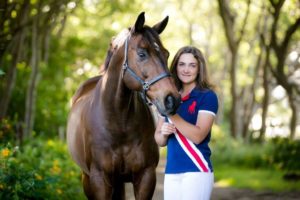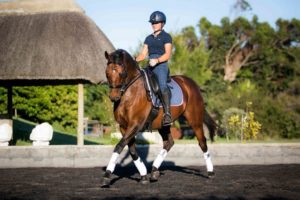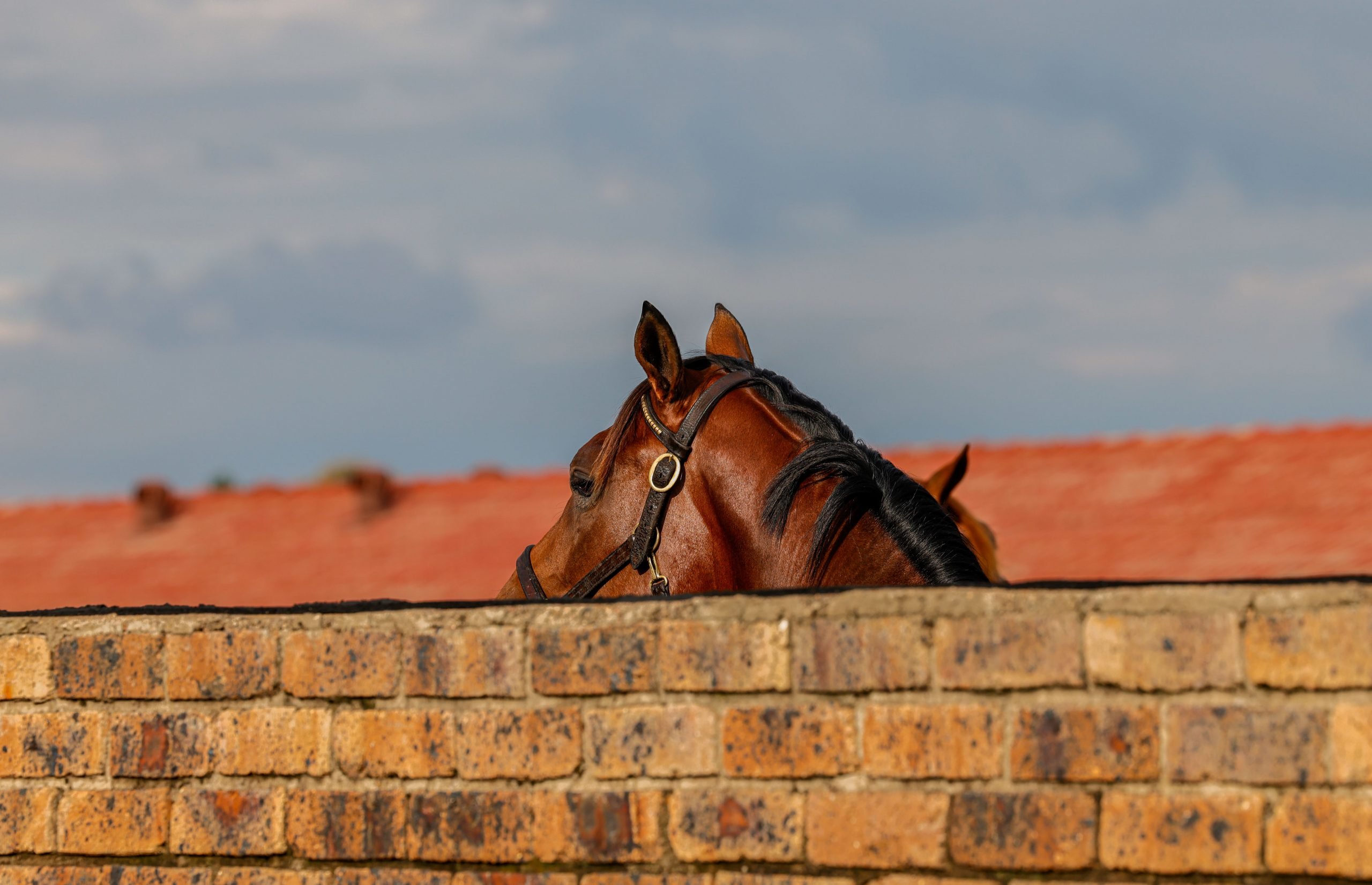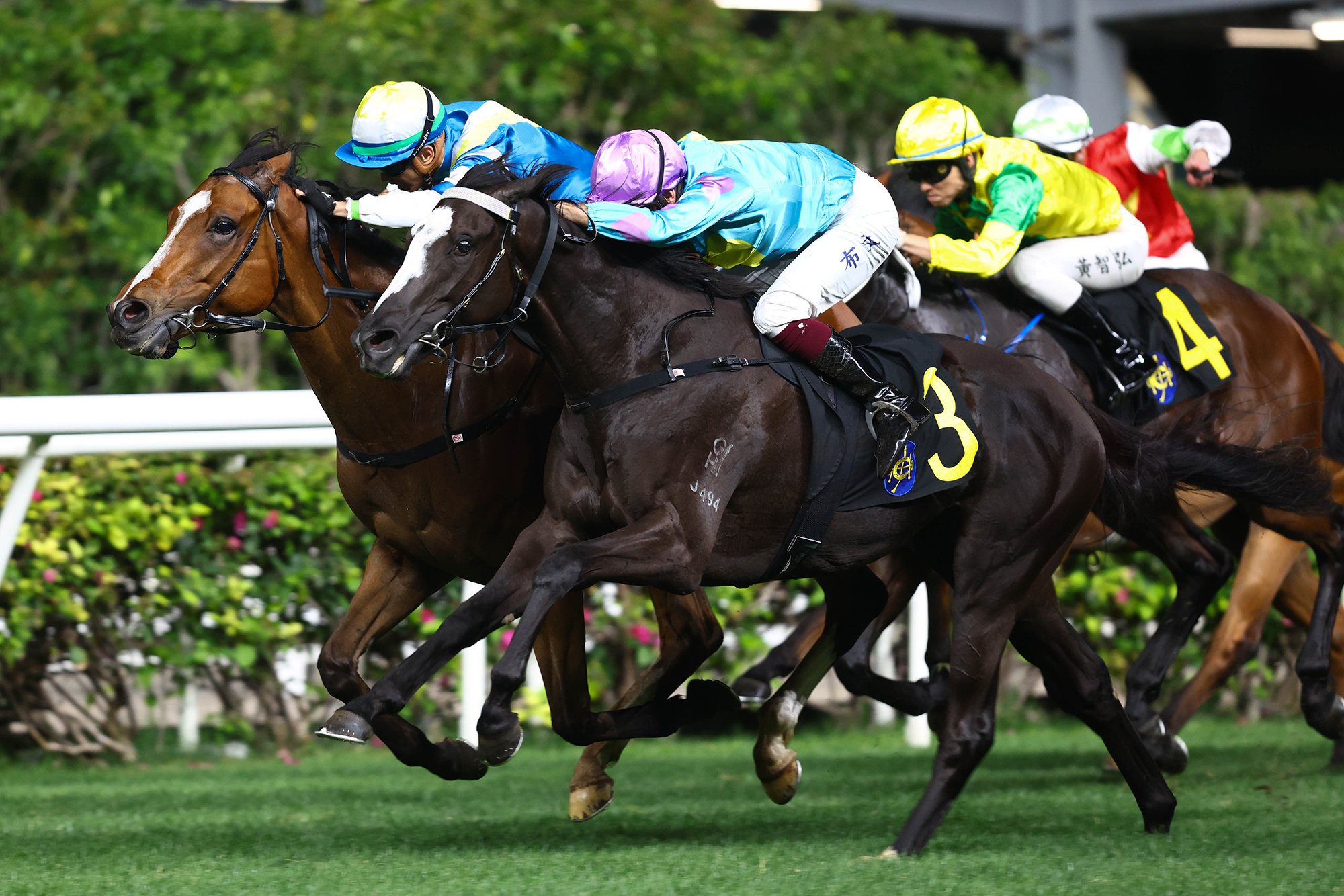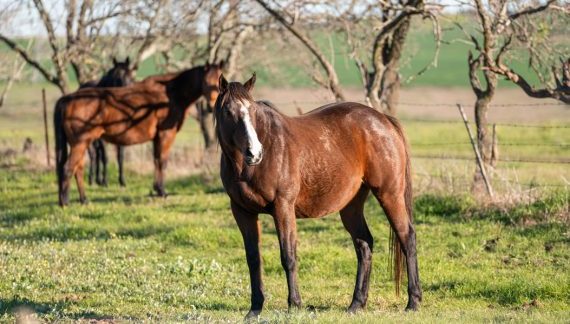I was somewhat amused by a recent article posted on a website I subscribe to, the subject which was that a Thoroughbred competition horse had been sold for ‘the same price as a Warmblood’. It’s a nice story about a family, who pay $1,000 (it’s an American story) for a filly off the track and with hard work and dedication, transform her into a top competition horse. The amusing bit – to me anyway – is the implied message that a ‘lesser’ horse had done as well as the ‘better’ horses by fetching the sort of price normally paid for a purpose-bred competition Warmblood.
Although it was a well-intentioned piece (and it’s by no means the only one of its kind), in many ways it sums up how apologetic we have become about our breed – and when I say ‘we’, I don’t just mean the local audience – the attitude seems to have seeped into the consciousness of horse people everywhere. It’s not uncommon to hear “Oh, he’s ONLY a Thoroughbred”, or the somewhat backhanded compliment “Gosh, he’s so lovely, he could easily pass for a Warmblood!” Somehow Warmbloods have become the gold standard and Thoroughbreds have become the ‘also rans’ in the leisure market popularity stakes.
So what, you might think. The reason I raise this as a concern is that South Africa produces around 3,500 registered Thoroughbred foals a year. Subtract a percentage for those that don’t make it out of training, a few that go abroad and a few more who make their way into the breeding industry, and you’re still left with the lion’s share of that figure needing homes and new careers after racing. With the economy being what it is and everyone introducing ‘austerity measures’, there is less leisure rand to go round, which means fewer available homes for horses retiring from the track. We are by no means the only country dealing with this problem and just to put things into perspective, the USA produces somewhere around 25,000 Thoroughbreds a year!
Due to the commercial aspect of the sport, racing is a high profile industry and we get a lot of media attention. This is good when there are positive stories to report, but it can be painful when the news isn’t so good. Of course, one can’t simply wish away bad news – it’s a fact of life and if we aren’t made aware of issues, we can’t address them – but with the number of bad news stories on the increase, it’s clear that the issue of rehoming racehorses is a conversation that’s here to stay.
The world is changing
In my day (oh dear, showing my age now!), the endurance people had Arabs, the Saddler people had American Saddlers, kids had Welsh ponies (or Shetlands if they were particularly unlucky!) and everyone else had a Thoroughbred. There were big ones and little ones and fine ones and workmanlike ones and they hunted and jumped, evented, played polo, showed, did dressage and just about anything else you can think of and they did just fine and no-one thought to question that life might be any different.
However, with the advent of technology and the ever increasing speed and ease of doing things, one can now import the latest and greatest of whatever European competition horse you like. You can cross the last Olympic champion with the horse who finished second and you can practically order your preferred size and colour. And by the magic of modern technology and things like frozen semen and artificial insemination, this can now be done right here on our very own doorstep, making these fancy horses more accessible and affordable than ever. Unlike our ‘pre-loved’ Thoroughbreds who come with an entire racing career of wear and tear under their belts, the purpose bred competition horses can be acquired brand spanking new and so freshly out of the box that they’ve only got show room mileage. It’s a pretty compelling package.
I’m not quite sure when the trend swung from ‘Thoroughbreds are OK’, to ‘everyone must have a Warmblood’, but the fact of the matter is that as far as the leisure market is concerned, Thoroughbred stock is low. In business terms, we still have a large and steady supply, but the demand has dropped off. The struggle is real and it means less homes to go round when horses leave the track, which means that we’re going to be having the rehoming conversation more often.
Retired Racehorse Project
The problem of what to do with horses once they leave the track is a multi-faceted one which presents a number of logistical challenges, but while authorities the world over scratch their heads, a number of people are taking matters into their own hands, addressing the ‘demand’ half of the conundrum by changing the attitude towards Thoroughbreds, one good horse at a time. Instead of apologising for Thoroughbreds, there are a number of campaigns to advertise them and one of the more fun and high profile initiatives is the USA’s Retired Racehorse Project.
The project was established in 2010 and is the brainchild of Steuart Pittman, who has made it his mission to reclaim the reputation of Thoroughbreds and make them cool as riding and competitive prospects again. The programme is still growing and developing, but one of their big drivers is their annual Thoroughbred Makeover Programme, where they select a number of horses off the track, place them with professional competition trainers for a set number of months and then arrange a big showcase at the end to show off the horses’ progress.
It has become a big hit, attracting the support of high profile trainers and personalities from all over the US, if not the world, including support from the yards of Graham Motion and Todd Pletcher, breeding farms including Adena Springs, Phipps Stables, Darley and Winstar and they even roped in retired jockey Rosie Napravnik to take on a project horse. The 2015 showcase was held at the Kentucky Horse Park on 23-25 October and attracted two hundred Thoroughbreds from 44 states, Canada, and England. In order to showcase the versatility of the Thoroughbred, the horses could choose to compete in a choice of ten riding disciplines including Dressage, Show Jumping, Show Hunter, Eventing, Competitive Trail, Barrel Racing, Fox Hunting, Polo, Ranch Work, and Freestyle all vying for the coveted title of ‘America’s Most Wanted Thoroughbred.’
The event has inspired a $2.5 million investment in the care and training of 350 horses, giving each horse in the programme an education (and a public profile) that will secure its future as nearly half the horses on show were available for sale or adoption. So it’s a great advertising vehicle as well as a great enabler for Thoroughbred owners and fans everywhere as thanks to the magic of the internet and social media they got to be involved in the process, and had access to the trainers and bucket loads of information from start to finish.
There’s an old adage that there’s no such thing as bad advertising, and while it’s great to celebrate our Thoroughbreds doing well, the fact of the matter is that it’s the norm, rather than the exception. Thoroughbreds have been quietly going about their job of being good at what they’re asked to do for, well, just about ever really.
Of course, we live in a result driven world and the best way to prove a point is to provide results. Due to their speed and athleticism, Thoroughbreds have always held their own in the eventing and jumping worlds, but their build and early training means they’re often overlooked as serious dressage prospects. Of course, all it takes for change is one good horse and a shining light on the dressage circuit is young rider Nichola Mohr and her wonderful Prix St George horse, Vaderlandsche Sport Schu (or Takkies to his friends).
The Mohr family
The Mohrs are a well-established racing family. Grandmother Judy Wintle (who will be familiar to racing folk as the breeder of Big City Life) hails from the Southey dynasty, although she says she’s from the Schoombie, sheep farming side of the family, rather than from the horse breeding Southeys. When she settled down in the Western Cape, her daughters were seduced by an advert for riding lessons posted on their school notice board and their lives have been intertwined with horses ever since.
Linda (now married to the Mohr Philippi farming family) started with the speed gene, being a keen eventer and working for Ralph Rixon’s racing string, before focussing on her livery yard and the competition world. Kathi (married to Woodhill Racing’s Glen Kotzen), tackled it the other way round, starting out as an accomplished dressage rider, but now being married into the racing side.
Nichola
Linda’s eldest daughter Nichola has been riding since before she can remember. She was a very successful child rider and just before progressing to Juniors, Kathi rang one day to say they had a horse that was not too good on the track, but would make a very special competition prospect. With a R1,000 gift from her grandfather, Nichola took one look at Sport Schu and fell in love.
That was all the way back in 2004, when Takkies was still a 3 year old, but the partnership has reached stellar heights. Nichola and Takkies have been the leading WC combination for the last two years and at the recent FEI International Dressage Challenge they won their Warmup class and finished second in both their Intermediare 1 classes. Unfortunately Nichola’s grandfather passed away a few months after she bought Takkies and has missed out on their success, which just makes Takkies all the more special. Nichola gives him an affectionate rub and says “All my other horses have price tags, but Takkies will never be for sale.”
Warmblood vs Thoroughbred
Nichola admits there is a certain amount of satisfaction beating the expensive Warmbloods at their own game and even more so when it’s the fancy imported ones, but points out that the starting point for any successful partnership is a good temperament. “You can improve any horse with work, but what you cannot change is temperament and Thoroughbreds are a lot more forgiving than Warmbloods. While Warmbloods are purposefully bred to be strong and powerful, temperament-wise they are not as straightforward as people think. A Thoroughbred may not be built for dressage in quite the same way, but if you invest the time and effort and figure out ways to help them use their bodies correctly, they can also do what Warmbloods do. And because they are bred to work and have a good work ethic, they are often easier to work with.” But she’s quick to add that it takes a lot of hard work and more importantly, a lot of the right hard work and she acknowledges her family and her coach, Andre la Conte as the pillars of her success.
The irony in all this is that most Warmblood breeders are trying to refine their stock and – in short – make them look more like Thoroughbreds, which I think that pretty much makes my point for me.
Perhaps instead of saying ‘like a Warmblood’ when a Thoroughbred excels, we should simply say ‘like a boss’. As the bumper sticker goes – Get your ass on some class – ride a Thoroughbred!
For anyone wanting to see one good horse doing his bit to change attitudes about Thoroughbreds doing dressage, Nichola and Takkies will be in action at the WP Dressage Championships at Stellenbosch District Riding Club this Sunday.




